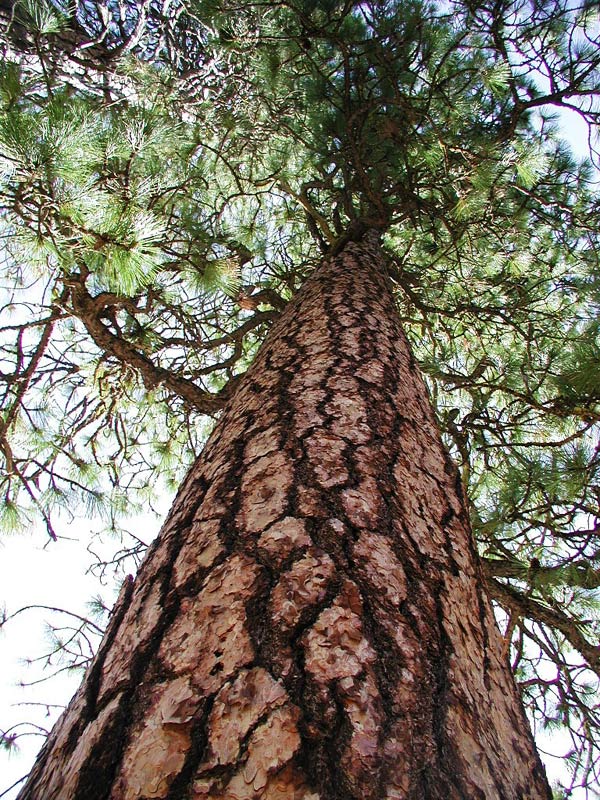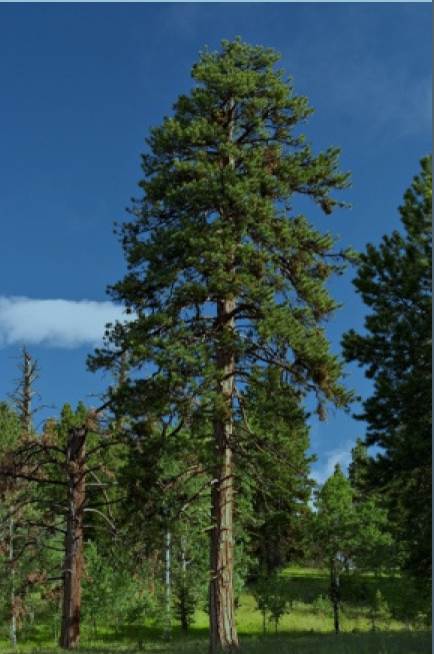Ponderosa pine forest retreat
Ponderosa pine forests in the Sierra Nevada have retreated uphill over the past 80 years.
Changes in climate are driving many plants and animals toward areas where conditions are favorable. Across the globe, observed changes in species distribution – usually towards the poles or to higher elevations – have been noted. In the mixed conifer forests of the northern Sierra Nevada Mountains, Ponderosa pine occupies the lowest elevation. For more information, download the Ponderosa Pine Forest Retreat chapter.
Ponderosa pine are stately trees with a distinctive orange-brown bark arranged in large vertically oriented plates along the trunk.


Credit: USFS; Calphotos, Monty Rikard
What does this indicator show?
- The lower edge of the Ponderosa pine forest of the Sierra Nevada has shifted upslope since the 1930s.
- Oaks and other broad-leaf or hardwood trees and chaparral have expanded into the area along the approximately 190-mile long stretch at lower elevations where pines no longer dominate.
Why is this indicator important?
- Shifts in vegetation can lead to changes in the availability of food for wildlife and in the amount of shade, the temperature of microenvironments, and other physical features of the forest ecosystem. For example, where oaks and hardwood trees have increased, birds, mammals and other animals that rely on these for food and habitat will find favorable conditions, while species that depend on pine nuts and pine trees will find fewer resources.
- Along with increasing temperatures, the shift to oak-dominated forests means these areas will dry out more quickly, increasing the risk of wildfires.
- Since the lower edge of the snowpack aligns with the conifer belt, the upslope movement of conifers can visually indicate which areas of the Sierra Nevada still maintain a snowpack.
What factors influence this indicator?
- Lower elevations of the western Sierra Nevada, mostly below 3,300 feet, no longer experience below-freezing nighttime temperatures in the winter. Although warmer temperatures and associated drying are not likely to kill adult trees, wildfires, logging clear cut, land use change, bark beetle or disease outbreaks can. When adult trees die at the lower elevations, their seedlings are increasingly unable to survive long enough to allow for new stands of trees to establish.
- Vegetation elevation changes are also linked to other regional factors, such as species competition, topographic conditions, and land use.
New information presented in the 2022 report is summarized below:
- Across the western United States, climate conditions in the lower edge of Ponderosa pine forests in the last 20 years were found to be increasingly unsuitable for regeneration.
- Tree deaths in recent years, along with wildfires, have likely contributed to the continued upslope movement of Ponderosa pines.
- Tree die-off across the Sierra Nevada during the 2012-2015 drought has been linked to the drying of the deep rooting zone (5 to 15 meter depths) due to a combination of drought, heat and increased evaporative demand (the amount of water that could potentially evaporate). More deaths occurred in denser forests and among larger trees during hot, dry conditions.
Additional resources
- US Department of Agriculture, California Climate Hub, Healthy Forests: Ponderosa Pine
- UC Agriculture and Natural Resources, Forest Research and Outreach, Ponderosa Pine (Pinus ponderosa)
